-
 Bitcoin
Bitcoin $117400
-0.46% -
 Ethereum
Ethereum $3768
0.60% -
 XRP
XRP $3.551
2.09% -
 Tether USDt
Tether USDt $1.000
0.00% -
 Solana
Solana $203.2
11.30% -
 BNB
BNB $770.9
1.92% -
 USDC
USDC $0.9999
0.01% -
 Dogecoin
Dogecoin $0.2709
-0.02% -
 Cardano
Cardano $0.9024
4.49% -
 TRON
TRON $0.3139
0.60% -
 Hyperliquid
Hyperliquid $45.60
-1.41% -
 Stellar
Stellar $0.4730
-1.34% -
 Sui
Sui $4.025
2.15% -
 Chainlink
Chainlink $19.79
2.19% -
 Hedera
Hedera $0.2724
-2.39% -
 Avalanche
Avalanche $25.93
3.05% -
 Bitcoin Cash
Bitcoin Cash $524.0
-1.83% -
 Shiba Inu
Shiba Inu $0.00001558
0.50% -
 Litecoin
Litecoin $116.7
-0.30% -
 UNUS SED LEO
UNUS SED LEO $8.996
0.00% -
 Toncoin
Toncoin $3.334
1.83% -
 Polkadot
Polkadot $4.506
0.34% -
 Uniswap
Uniswap $10.99
4.83% -
 Ethena USDe
Ethena USDe $1.001
0.03% -
 Pepe
Pepe $0.00001461
3.17% -
 Monero
Monero $320.3
-1.01% -
 Bitget Token
Bitget Token $4.935
0.36% -
 Dai
Dai $0.9998
0.00% -
 Aave
Aave $322.4
-1.25% -
 Bittensor
Bittensor $455.6
9.33%
What is liquidation in crypto trading?
Liquidation in crypto trading occurs when a leveraged position is automatically closed due to insufficient margin, protecting exchanges from counterparty risk.
Jul 22, 2025 at 10:43 am
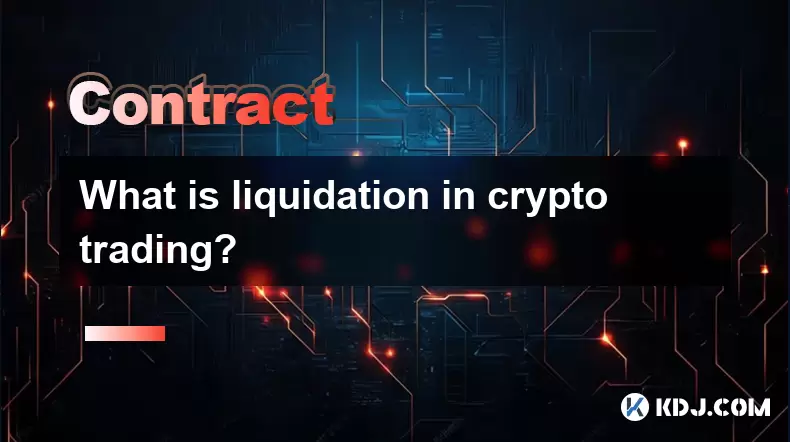
What is Liquidation in Crypto Trading?
In the realm of crypto trading, the term liquidation refers to the process by which a trader's position is automatically closed by the exchange due to insufficient funds to maintain the open trade. This typically occurs in leveraged trading, where traders borrow funds to increase their position size. If the market moves against the trader's position and the account equity drops below a required maintenance margin level, the system initiates a liquidation to prevent further losses.
Leverage amplifies both gains and losses, making liquidation a critical risk for traders who use borrowed capital.
How Does Liquidation Work?
Crypto exchanges use a margin system to manage leveraged trades. Traders deposit a portion of the total trade value as collateral, known as initial margin. The maintenance margin is the minimum amount of equity that must be maintained in the account to keep the position open.
- If the value of the trader's position falls and the equity dips below the maintenance margin level, a margin call is triggered.
- If the trader fails to deposit additional funds or reduce the position size, the exchange liquidates the position automatically.
The liquidation price is the market price at which this forced closure occurs, and it's calculated based on the leverage used, entry price, and margin amount.
Why Do Exchanges Liquidate Positions?
Exchanges implement liquidation mechanisms to protect themselves from counterparty risk. When a trader uses leverage, the exchange effectively lends them capital. If the trader cannot cover potential losses, the exchange could be left with unpaid debt.
- Liquidation ensures that losses do not exceed the trader's available balance.
- It maintains the integrity of the trading system and prevents systemic risks on the platform.
By liquidating a position early, exchanges avoid scenarios where traders end up with negative balances or where the platform absorbs the loss.
Types of Liquidation in Crypto Trading
There are primarily two types of liquidation that traders may encounter on crypto trading platforms:
- Partial Liquidation: Only a portion of the open position is closed to bring the margin ratio back to an acceptable level.
- Full Liquidation: The entire position is closed when the margin falls significantly below the required level.
Some platforms also use auto-deleveraging (ADL), which shifts losses from bankrupt traders to other leveraged traders who are on the opposite side of the market.
Understanding the type of liquidation used by your exchange is crucial for managing risk and avoiding unexpected losses.
How to Avoid Liquidation in Crypto Trading?
Avoiding liquidation involves a combination of risk management strategies and platform-specific settings. Here are some practical steps traders can take:
- Use lower leverage: High leverage increases liquidation risk; reducing it can help preserve capital.
- Set stop-loss orders: These can help close positions before they reach liquidation levels.
- Monitor margin levels: Regularly check the margin ratio and add funds if necessary.
- Choose platforms with better liquidation engines: Some exchanges offer bankruptcy price protection or liquidation discounts to safeguard traders.
Traders should always calculate their liquidation price before entering a leveraged trade to understand the point of forced exit.
Real-World Example of Liquidation
Suppose a trader opens a $10,000 long position on Bitcoin using 10x leverage, with a $1,000 margin. The exchange requires a maintenance margin of 5%. If the price of Bitcoin drops and the trader's equity falls below $500 (5% of $10,000), the position will be liquidated.
- In this scenario, the liquidation price would be calculated based on the entry price, leverage, and funding fees.
- If the market moves quickly (e.g., during high volatility), the position may be closed at a worse price than expected due to slippage.
This example illustrates how leverage magnifies risk and why understanding liquidation mechanics is essential for crypto traders.
Frequently Asked Questions (FAQ)
Q: Can I recover funds after a liquidation?
A: Once a position is liquidated, the funds are typically lost. Some platforms may return a small portion of the margin if the liquidation engine closes the position above the bankruptcy price.
Q: How is the liquidation price calculated?
A: It depends on the initial margin, leverage, entry price, and maintenance margin. Most exchanges provide a liquidation price calculator on their trading interfaces.
Q: What is auto-deleveraging (ADL)?
A: ADL is a risk-sharing mechanism where profitable traders may have their positions reduced to cover losses from bankrupt traders. It is common on derivatives platforms.
Q: Does liquidation apply to spot trading?
A: No, liquidation only applies to leveraged trading, such as futures or margin trading. Spot trading involves buying and selling actual assets without borrowing.
Disclaimer:info@kdj.com
The information provided is not trading advice. kdj.com does not assume any responsibility for any investments made based on the information provided in this article. Cryptocurrencies are highly volatile and it is highly recommended that you invest with caution after thorough research!
If you believe that the content used on this website infringes your copyright, please contact us immediately (info@kdj.com) and we will delete it promptly.
- Bitcoin, Trump Media, and a Stock Boost: A New York Minute on Crypto & Politics
- 2025-07-22 15:30:12
- Solana Ecosystem Tokens Surge: Riding the Wave to New Highs?
- 2025-07-22 15:30:12
- Bitcoin, Render Token, and Resistance Levels: A New Yorker's Take
- 2025-07-22 15:50:12
- MoonBull's Whitelist Mania: Your Last Shot at 100x Crypto Gains?
- 2025-07-22 10:30:12
- Meme Coins in 2025: Explosive Gains or Fading Fad?
- 2025-07-22 10:30:12
- Kim Keon-hee Crypto Probe: Scandal Rocks South Korea's Political Scene
- 2025-07-22 10:50:12
Related knowledge
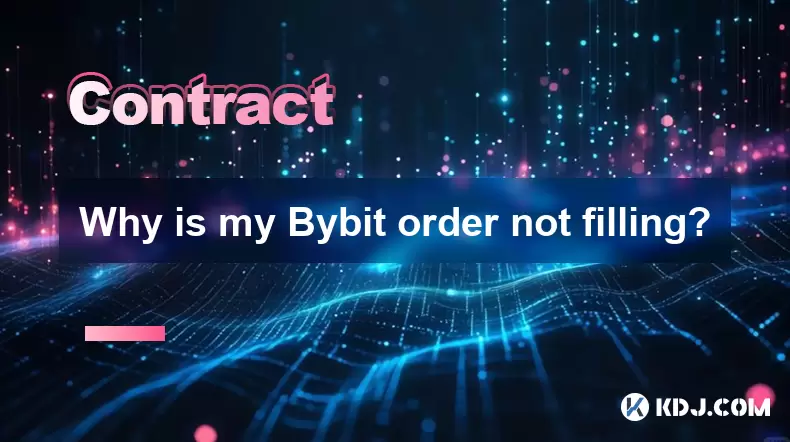
Why is my Bybit order not filling?
Jul 22,2025 at 03:50pm
Understanding Order Types on BybitWhen your Bybit order isn’t filling, the first step is to verify the order type you selected. Bybit offers several t...
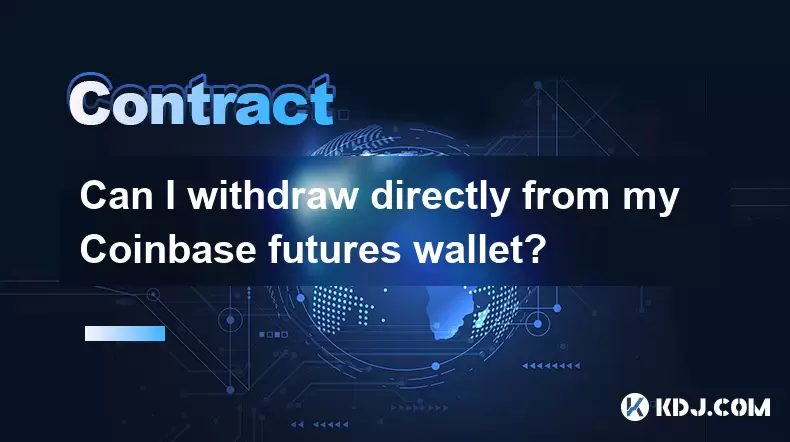
Can I withdraw directly from my Coinbase futures wallet?
Jul 22,2025 at 02:14pm
Understanding Coinbase Futures WalletsCoinbase does not currently offer a dedicated futures wallet within its standard Coinbase app or platform. Futur...

Is Coinbase futures available in Canada?
Jul 22,2025 at 02:57pm
Understanding Coinbase Futures and Their AvailabilityCoinbase Futures refers to the financial instruments offered on Coinbase’s derivatives trading pl...
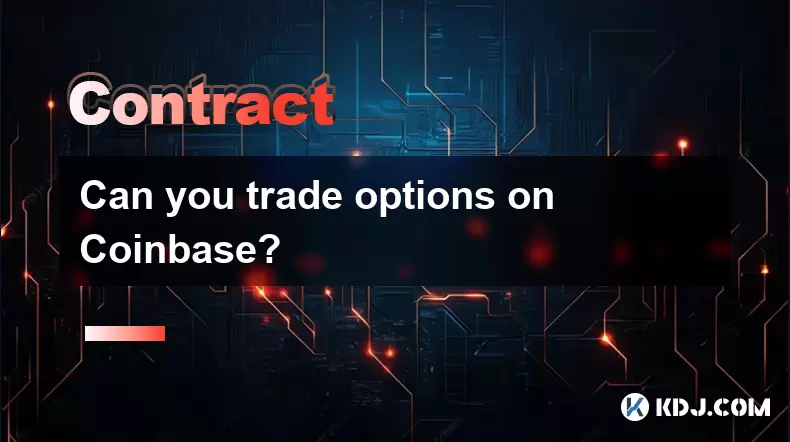
Can you trade options on Coinbase?
Jul 22,2025 at 03:42pm
Understanding Options TradingOptions trading involves contracts that give the buyer the right—but not the obligation—to buy or sell an asset at a pred...
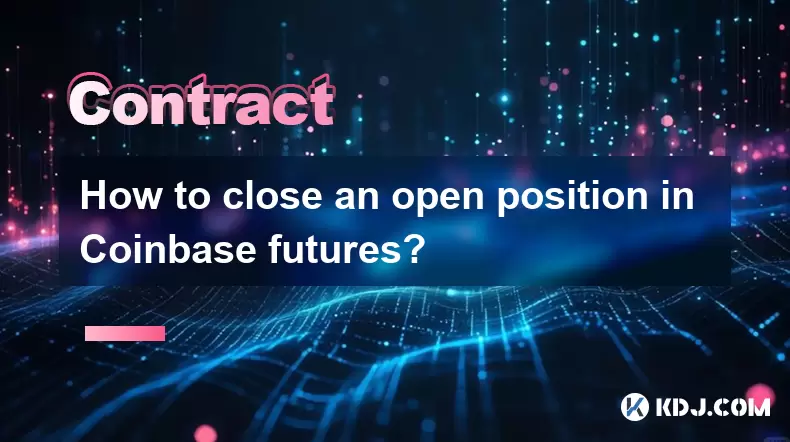
How to close an open position in Coinbase futures?
Jul 22,2025 at 03:00pm
Understanding Open Positions in Coinbase FuturesWhen trading futures on Coinbase, an open position refers to a trade that has been initiated but not y...
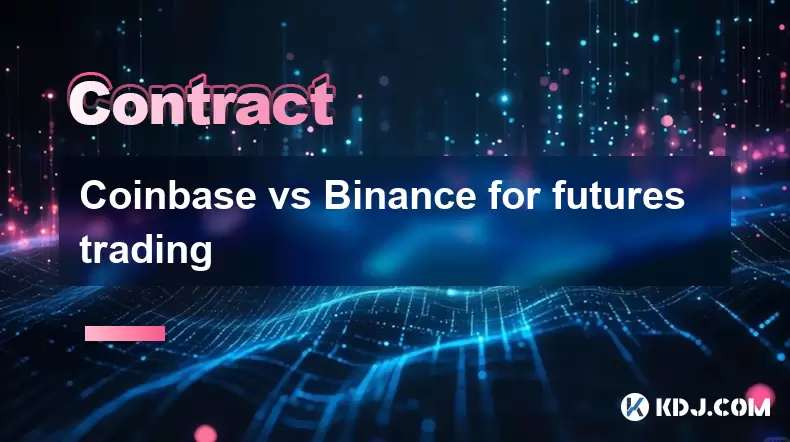
Coinbase vs Binance for futures trading
Jul 22,2025 at 03:22pm
Platform Overview: Coinbase and BinanceWhen comparing Coinbase and Binance for futures trading, it's essential to understand each platform's foundatio...

Why is my Bybit order not filling?
Jul 22,2025 at 03:50pm
Understanding Order Types on BybitWhen your Bybit order isn’t filling, the first step is to verify the order type you selected. Bybit offers several t...

Can I withdraw directly from my Coinbase futures wallet?
Jul 22,2025 at 02:14pm
Understanding Coinbase Futures WalletsCoinbase does not currently offer a dedicated futures wallet within its standard Coinbase app or platform. Futur...

Is Coinbase futures available in Canada?
Jul 22,2025 at 02:57pm
Understanding Coinbase Futures and Their AvailabilityCoinbase Futures refers to the financial instruments offered on Coinbase’s derivatives trading pl...

Can you trade options on Coinbase?
Jul 22,2025 at 03:42pm
Understanding Options TradingOptions trading involves contracts that give the buyer the right—but not the obligation—to buy or sell an asset at a pred...

How to close an open position in Coinbase futures?
Jul 22,2025 at 03:00pm
Understanding Open Positions in Coinbase FuturesWhen trading futures on Coinbase, an open position refers to a trade that has been initiated but not y...

Coinbase vs Binance for futures trading
Jul 22,2025 at 03:22pm
Platform Overview: Coinbase and BinanceWhen comparing Coinbase and Binance for futures trading, it's essential to understand each platform's foundatio...
See all articles

























































































